
Out of Pocket: Contemporary watches on a chain – or car dashboard – to wear or display with pride
The history of modern watchmaking began with the classic pocket watch so beloved by people of a certain standing in society and releasing them from the constraints of the public clock tower. These timepieces undoubtedly held a particular charm and are now much sought after by collectors. Many top manufactures continue to roll out fine pocket watches for their growing legion of admirers.
Cartier, which first turned its hand to such watches in 1853, now produces the Rotonde de Cartier Grande Complication Skeleton pocket watch. Set in a frame hewed from rock crystal with traces of black obsidian and white gold, it is powered by a 9506 automatic movement comprising 578 parts including 44 rubies in a skeletonised style that allows admirers to view its mechanical sophistication – minute repeater, flying tourbillon and perpetual calendar – and elegant aesthetics.
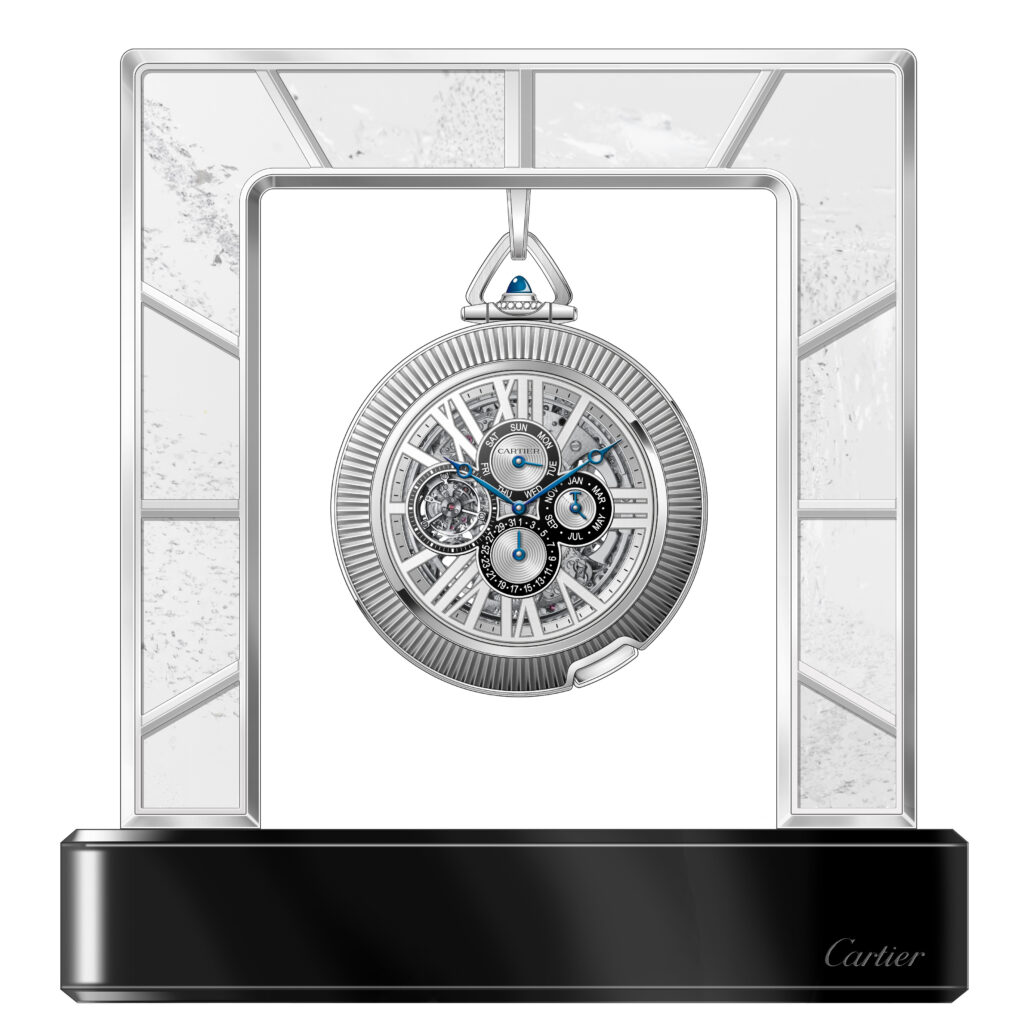
Coming in two versions, the white-gold model has a beaded crown set with a cabochon-cut sapphire, a colour picked up by blued-steel apple-shaped hands, while the other iteration dazzles with 263 baguette-cut diamonds on its case, 111 baguette- cut diamonds on its dial, and a diamond on the crown for a grand total of 27 carats.
Among IWC’s contemporary pocket watches is a precious homage to its original Pallweber pocket watch released in 1885. The limited-edition Tribute to Pallweber Edition “150 Years” timepiece evokes the original pocket watch but comes with large digital hours and minutes displayed in windows.
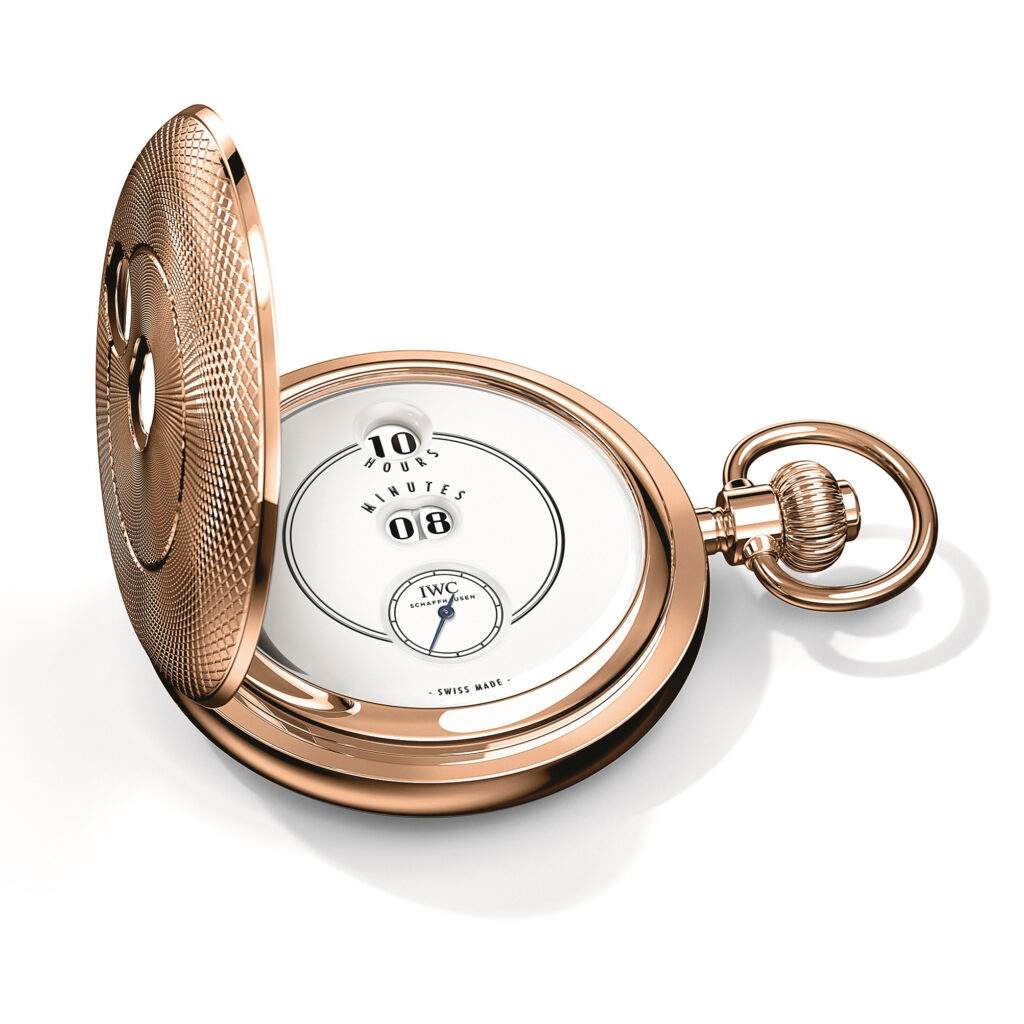
The instrument, which is attached to an 18-carat red-gold chain, boasts a red-gold case and a white lacquered dial with black-printed white display discs and blued seconds hands. Its convex glass sapphire has an antireflective coating on both sides. Even when the pocket watch is closed, the time can be read thanks to two windows in the spring cover.
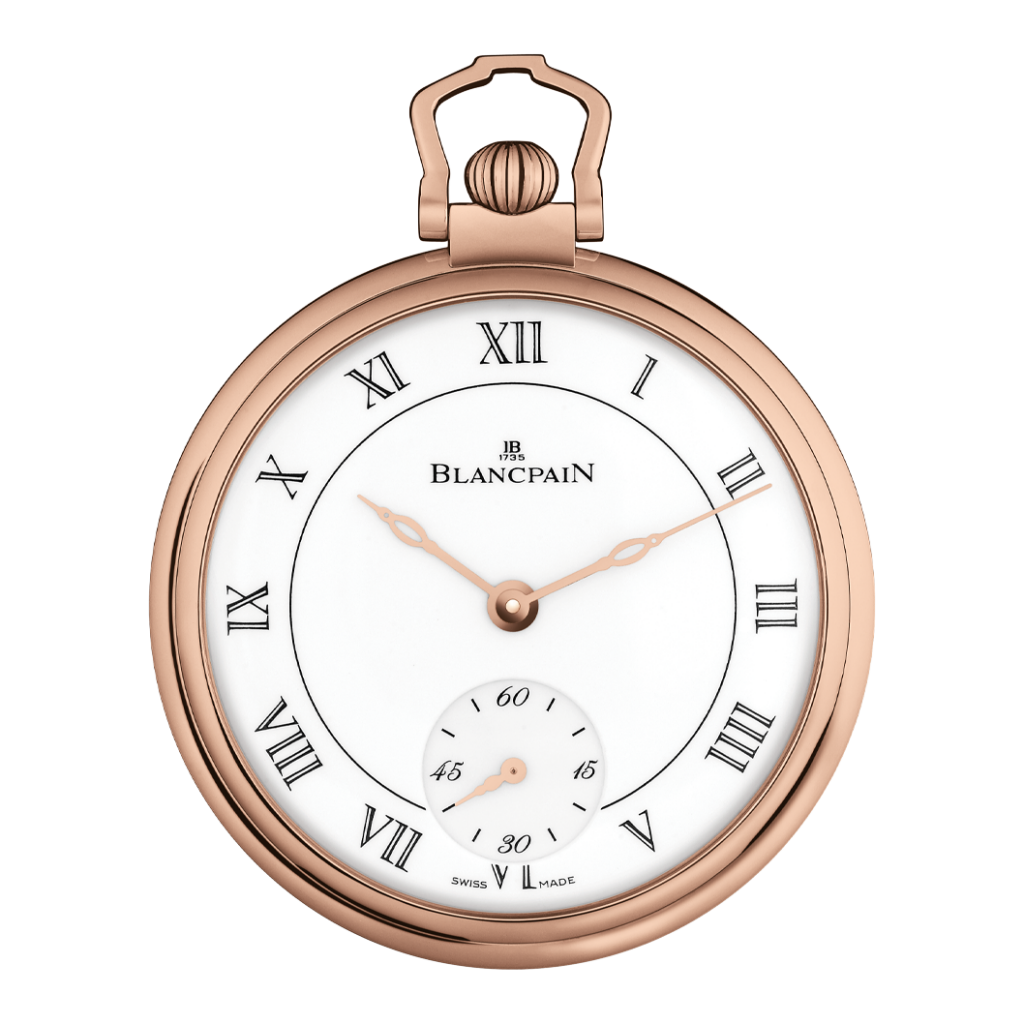
Blancpain’s standout pocket watch is the ultra-slim Montre De Poche Demi-Savonnette, a Métiers d’Art creation available in three variants. Classically elegant, its white grand-feu enamel dial is ensconced within a 9 mm-thick red-gold case that measures 44.5 mm in diameter. Resplendent through the sapphire caseback, the 151B manual movement – which is only 2.2 mm thick – has 40 hours of power reserve.
A one-of-a-kind piece of high jewellery and haute horlogerie, The Ultimate Quadri Tourbillon pocket watch by Harry Winston has four independent tourbillons on its dial that rotate counterclockwise in 36 seconds. It is adorned with an 18-carat white-gold chain and 254 baguette- cut diamonds on a matching case, while its calibre HW4703 movement is also blessed with 95 jewels.
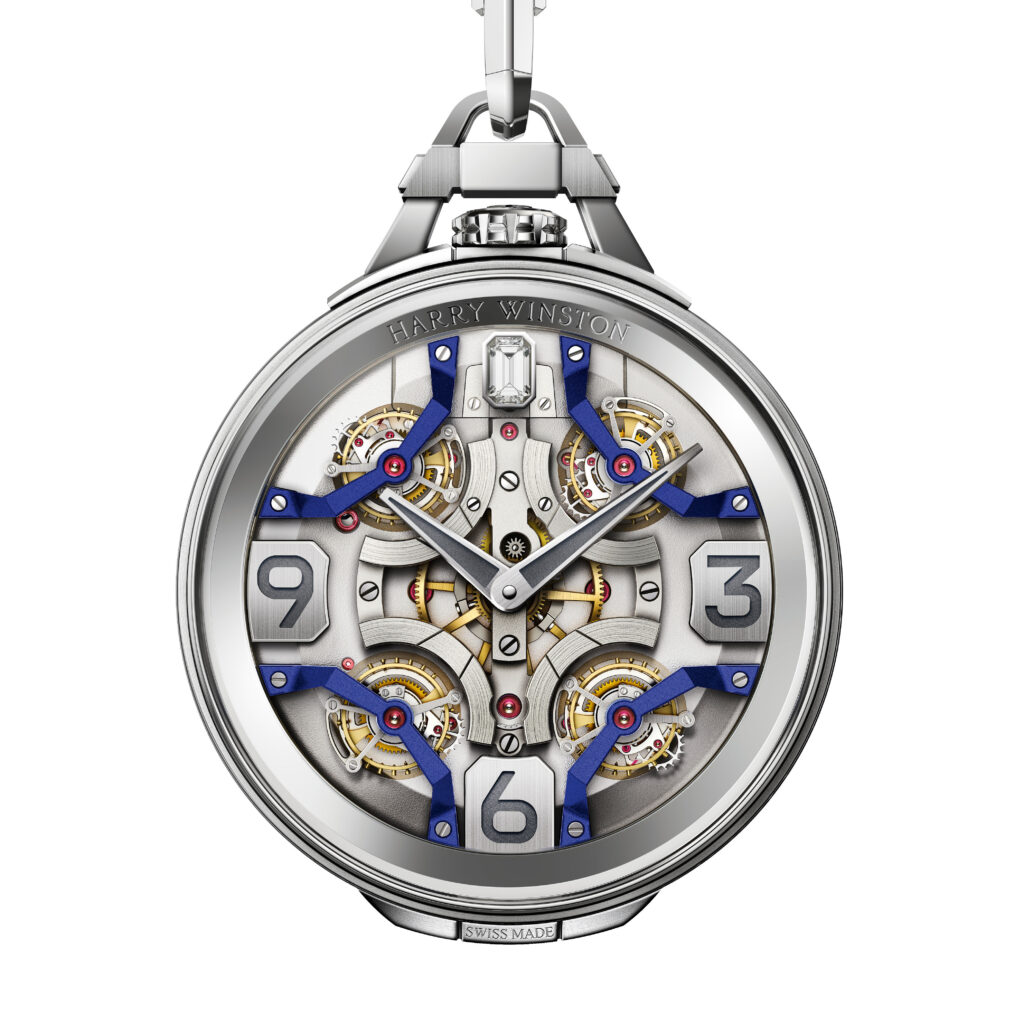
In fact, the total gem-setting for this collector’s item amounts to 272 baguette-cut diamonds of about 27 carats as well as an emerald-cut diamond and a brilliant-cut ruby.
Among 12 pocket watches displayed last year as part of the Rare Handcrafts collection at Patek Philippe’s Geneva salon was the “Leopard” ref. 995/137J-001, adorned with wood marquetry, hand engraving and champlevé enamel. The image of a leopard emerges from the darkness on its caseback – a wonderful artistic creation derived from different species of wood with varying colours, textures and veining.
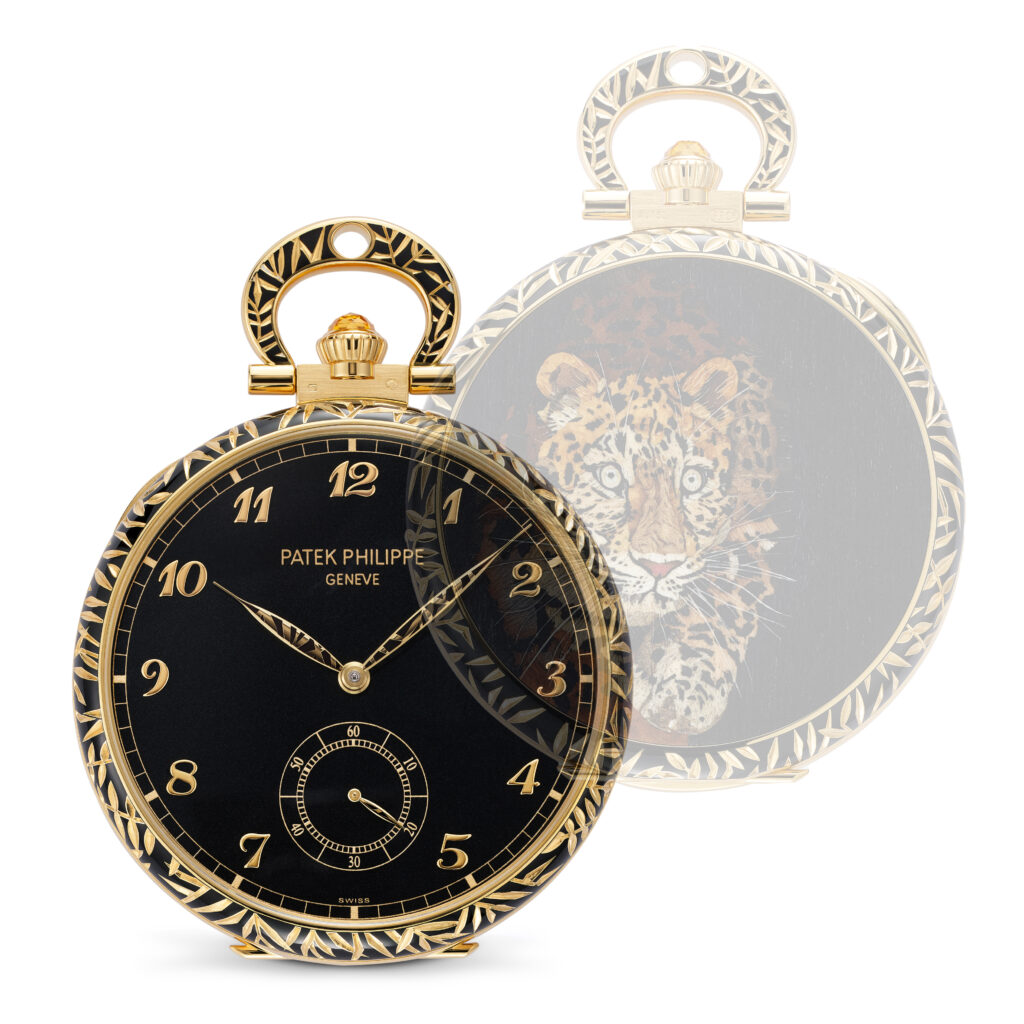
The spectacle is complemented by a pattern of tropical foliage inset with black enamel hand-engraved on the border of the caseback, the bezel on the dial side and the bow. The black-tinted tulipwood dial stands in beautiful contrast to a crown embellished with a yellow sapphire.
In homage to its 1932 pocket chronograph, Omega produced three editions (100 pieces each) of the Olympic Pocket Watch 1932 Rattrapante Chronograph utilising unassembled chronograph movement kits that had been in storage for 80 years.
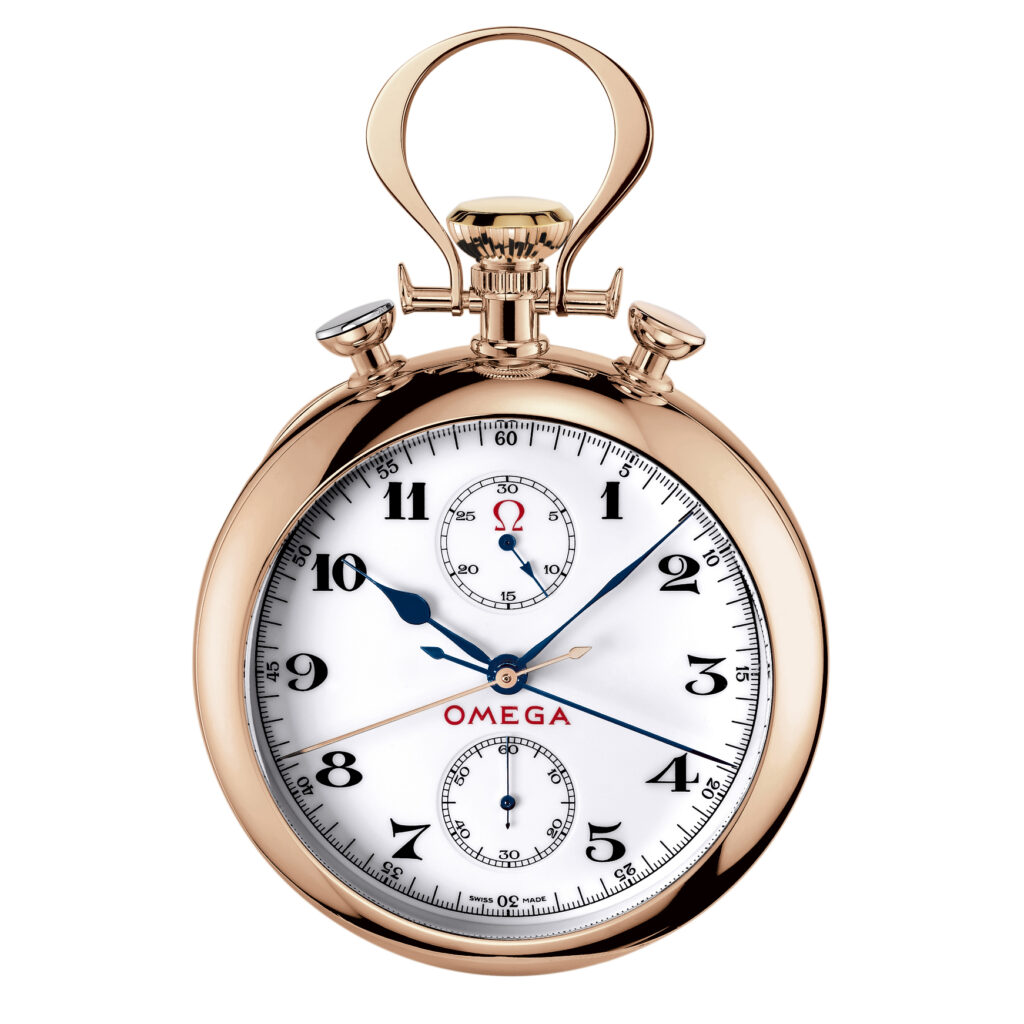
These timepieces come in 18-carat yellow, white and red gold to mimic the colours of the Games’ gold, silver and bronze medals. The original 1932 pocket chronograph was used as a stopwatch in the Los Angeles Olympics that year.
A particularly novel reinterpretation of yesteryear’s timepiece is the Hublot MP-03 Pocket Watch, which takes the traditional hanging pendant- type format but morphs the case into the shape of a bullet. Time is told by a horizontal tourbillon with three rotating wheels visible through the case aperture. The watch can be worn as a necklace or attached to a bag, belt and wrist strap.
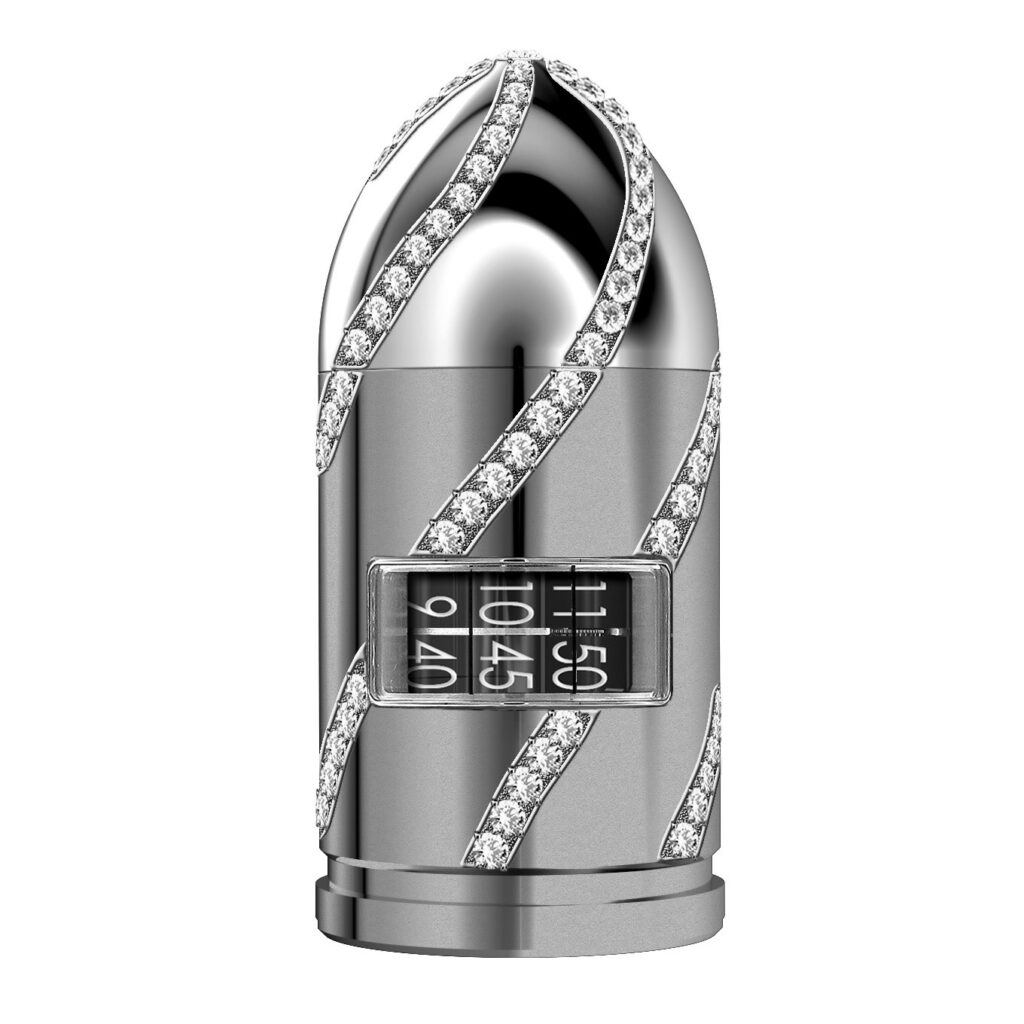
Vacheron Constantin has created a bespoke timepiece at the behest of a client who adores fine watches and luxury cars. While boasting aesthetic similarities to a pocket watch, Les Cabinotiers Armillary Tourbillon fits into the fascia of a motorcar – the Rolls- Royce Amethyst Droptail to be exact.
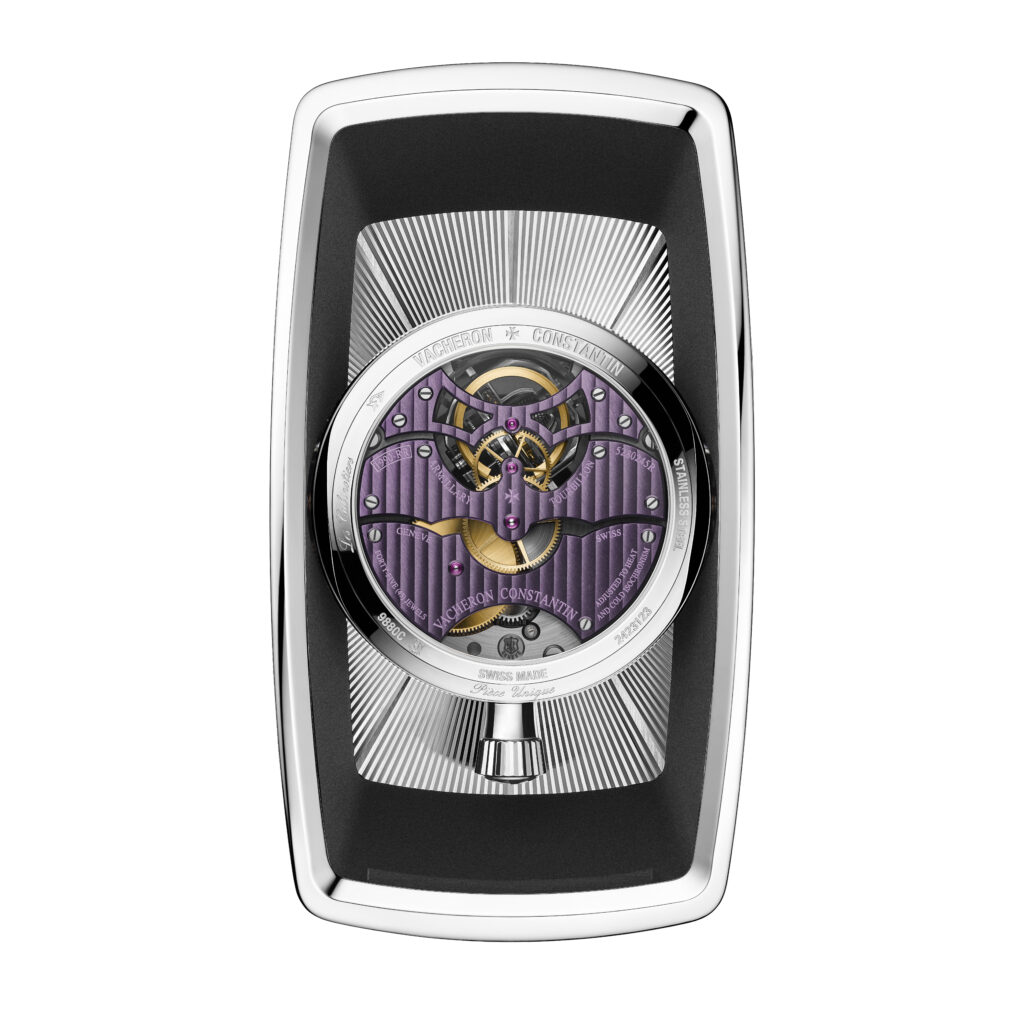
Its mechanical self-winding movement has a bi-retrograde display with the instantaneous return of the hours and minutes, reminiscent of the sweep hands on traditional speedometers. These hands are made of titanium, while the case is stainless steel, the main plate brass rhodium opaline, and the dial sapphire crystal.
Panerai’s Pocket Watch Tourbillon GMT Ceramica 59mm was released in a special limited edition of 50 pieces and retains the brand’s water- resistance tradition, plunging securely to a depth of 30 metres. Its chain, likewise, has a nautical appearance. A sapphire case reveals the skeletonised P.2005/S calibre with a six-day power reserve, a version of Panerai’s first in-house tourbillon movement launched in 2007. Interestingly, 12 rods link the case to the movement, giving the impression the latter is suspended in the centre of the device.
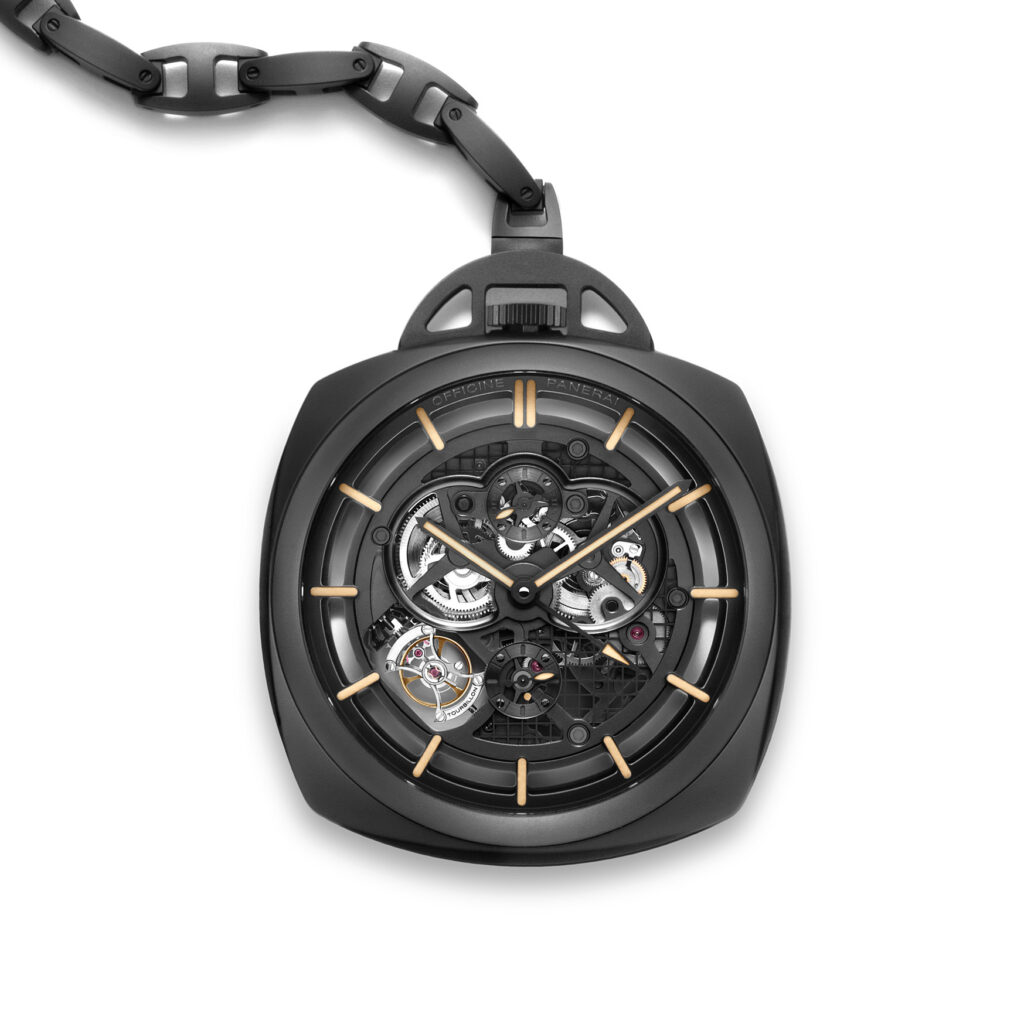
Special supports can transform the pocket watch into a table clock once the attached chain is removed – which is detached with ease simply by pressing a small button. The single links of the chain itself are linked by universal joints which guarantee greater resistance and at the same time provide maximum flexibility. The chain is attached to the case by a skeleton device shaped like the characteristic bridge that protects the winding crown of other Panerai timepieces.







